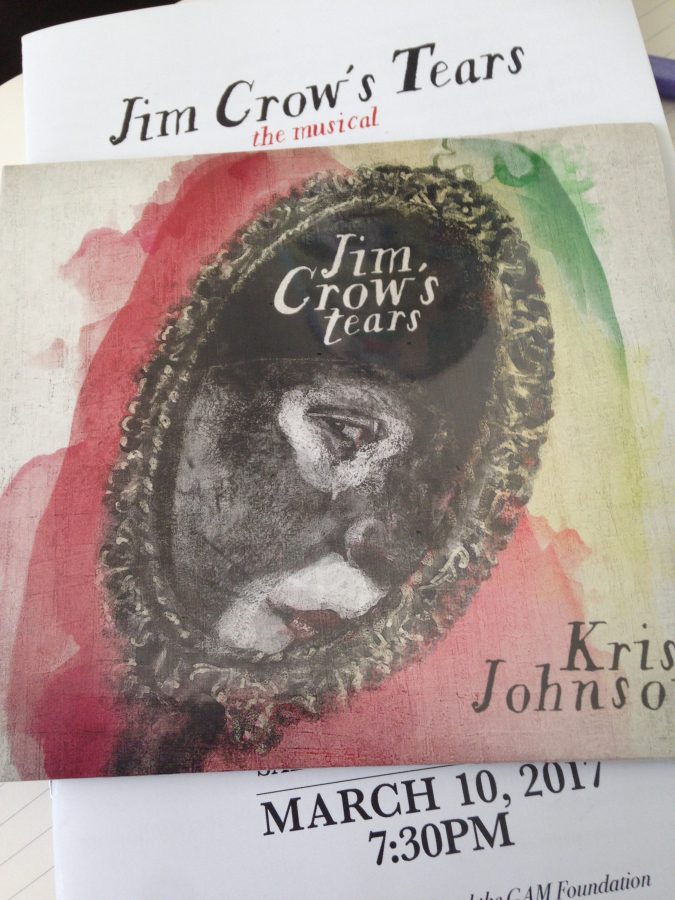A full band and orchestra took up half the stage for the evening’s one-time performance. Sold out the day of, the audience was crowded and seats filled to bursting in a way that mirrored the Rose Wagner Theater stage on March 10. Kris Johnson’s composition, “Jim Crow’s Tears,” had struck a chord before anyone played the first note.
It continued to strike chords throughout the performance. The show started quickly, diving into the music immediately after Johnson’s introduction. Jazz music that mesmerized audience members with its power, energy and gorgeous harmonies took them into the story despite there being no set, save projected images on three hanging screens. Though initially, the music overpowered the singers, it later mellowed out to create an even sound distribution.
Part I races off in a Black Minstrel Show in an Atlanta, Georgia theater. [For more information on Minstrel Shows, check out our preview.] Five African-American performers are on the stage–Antwaun Stanley (Lucius/Jim Crow), Sarah Elizabeth Charles (The Mulatto), Candice Corbin (Mother Pearl/The Sapphire), Milton Suggs (Mr. Tambo) and Cameo Humes (Mr. Bones), singing and performing in the minstrel style, though without the traditional, dehumanizing, blackface makeup. All seems fine except this minstrel show’s Jim Crow, one of the best remembered made-up figures from the minstrelsy era, says he’s done with performing like this. Following the first song, the audience is transported years back to when slavery was still widely practiced in the Southern United States.
Here the audience is given an intense glimpse of slavery’s horrors, complete with whippings, rape and other horrors of having a “master” through Joe Redman’s portrayal of white Southern minister Massa Purifoy. The story follows Lucius as he watches the rape of his love-interest, experiences denial from Massa Purifoy who he has learned is his father and ultimately the death of his own mother after a scene in which he tries to kill Massa Purifoy for revenge.
Following this brutal portrayal is an analysis of the different ways racism manifested after it was abolished in the U.S. Lucius presents a physical embodiment of internalized racism, the kind that tries to make the world reachable and understandable by portraying oppression as something that only happens to other people. His awakening is difficult to watch as it is difficult for him to experience. He is denied entry into a trashcan of a bar, because it is for “whites,” despite the fact that he likely has more than enough money to buy the establishment, let alone one drink inside.
The show ends with Lucius coming to grips with experiences of slavery, his participation in self-degrading minstrel shows, his treatment of other African-American people and the ways those all equate to forms of racism, both then and now. He decides he will no longer stand for it. He is a man, he says.
Performed by a talented band and orchestra, not to mention the amazing performers that were Stanley, Charles, Corbin, Suggs, Humes and Redman, with visuals provided by Gil Ashby and presented that night by David Deveau, this is a story that deserves wide attention. Kris Johnson composed the music, Damien Crutcher directed it and Gary Anderson wrote the book. As Johnson said, after everyone had taken their final bows, who knows, this may someday make it to Broadway. Told through gorgeous music, outstanding acting and limited visuals, “Jim Crow’s Tears” beautifully conveyed a heart-wrenching story.
Listen to some of the music from the show, and learn more about it, here.


